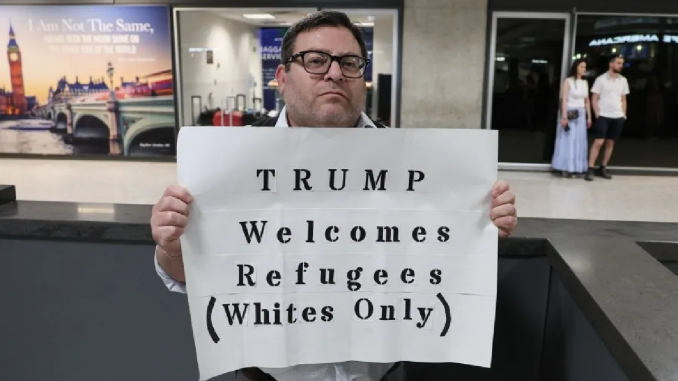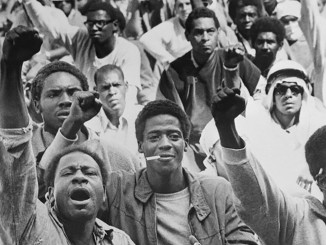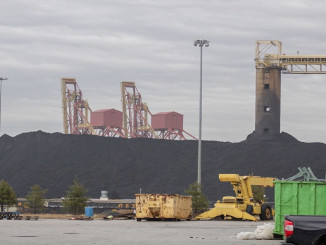
The Trump administration has announced a new cap on refugee admissions: just 7,500 people for the coming year. This is a drastic drop from the 125,000 who were allowed in during last year under Biden’s presidency. Even for a country that is no stranger to setting limits on who gets this type of protection, the scale of this cut is striking. But this is not just about numbers. It’s about who is welcomed and why. Trump officials have openly said they will prioritize white South Africans, claiming they face persecution in their home country. So, in a world full of war, poverty, and displacement, the U.S. government is reserving its sympathy for a group that fits its image of who deserves to be protected.
It could be easy to treat this as just one more headline in a long list of cruel policies under Trump. But the truth is far worse. The truth is that the difference between this and the past administration is one of degree, not kind. What makes Trump’s approach unusual is that it removes the pretense: it turns racism into open policy.
The decision to prioritize white South Africans comes from a right-wing conspiracy myth that a “white genocide” is being perpetrated against white South Africans. According to this fantasy, Black South Africans are murdering white farmers as revenge for apartheid. It is a story that has been debunked countless times, but it continues to circulate in far-right circles in the U.S. and Europe. The idea feeds into a broader belief that white people are now victims of reverse racism, a claim that ignores the ongoing inequalities in South Africa, where Black workers still suffer the economic violence left behind by apartheid’s violent repression.
By giving weight to this myth, Trump’s refugee policy shows that this is not about helping people, but rather about reaffirming who the state sees as valuable. The administration’s so-called compassion for white South Africans contrasts dramatically with its outright hostility towards refugees from places like Haiti, Sudan, Afghanistan, or Gaza, or even poor migrants from Latin America. In other words, real refugees fleeing from actual poverty, war, starvation, and genocide.
This also exemplifies how the people of color who supported Trump are now being forgotten. Afghan interpreters who worked with U.S. troops were left behind after the withdrawal, and now can’t flee to the United States. Latino supporters who believed his message are facing persecution from ICE. And in Black communities, the promise of “law and order” has meant more police raids and military intervention in cities like Chicago. The pattern repeats itself: loyalty to a racist system never pays off. Those who imagine they can earn acceptance through service or agreement are eventually pushed aside when they are no longer useful. Racism doesn’t just harm its direct targets. It also has the terrible effect of dividing working people, turning potential solidarity with other workers into suspicion and even hatred.
Trump’s refugee policy makes explicit what is usually hidden: official compassion in America is conditional. It is given according to your race, country of origin or your perceived usefulness. The only way out of that logic is to see that safety, dignity, and true justice will not come from the same governments that created those divisions. It will come from ordinary working-class people choosing solidarity over these divisions built to keep us apart.




